Crochet hair is a protective style that helps to protect and promote hair growth. It is a popular technique where individual hair extensions are looped through the natural hair.
This method not only adds volume and length to the hair but also provides a protective barrier that allows the natural hair to rest from manipulation and damage caused by everyday styling.
By using crochet hair, people can achieve various styles while preserving the health and integrity of their own hair.
Additionally, this protective style is versatile and can be customized to suit individual preferences, making it a popular choice among those seeking a low-maintenance yet stylish look.
What Is Crochet Hair?
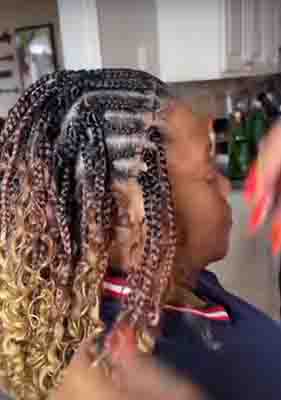
Crochet hair is a popular protective style that involves weaving extensions into cornrows. It offers versatility, easy maintenance, and protects natural hair from damage.
why crochet hair is making waves in the world of hairstyling
1. Seamless and Secure Installation:
- Crochet hair involves looping pre-braided or pre-curled hair extensions through cornrowed natural hair using a crochet hook.
- This method creates a secure and seamless look, with extensions blending effortlessly for a natural appearance.
2. The Illusion of Natural Growth:
- Crochet hair gives the illusion of natural hair growth, making it difficult to distinguish between your real hair and the extensions.
- The result is a hairstyle that appears as if it’s grown straight from your scalp.
3. Minimal Damage to Scalp and Strands:
- Unlike some traditional methods that can be harsh on the scalp and hair strands, crochet hair minimizes damage.
- The installation process is gentler, reducing the risk of breakage or scalp irritation.
4. Versatility at Your Fingertips:
- Crochet hair allows you to experiment with different lengths, volumes, and styles. From braids to curls, the options are endless.
- You can easily switch up your look without committing to a single style.
Different Types Of Crochet Hair Available In The Market
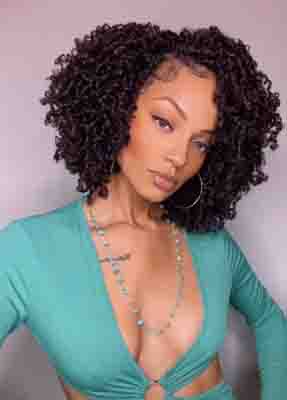
When it comes to crochet hair, there is a wide range of options available in the market to suit everyone’s preferences and needs. Here are some of the most popular types:
- Kinky and Afro-textured hair: Perfect for those who desire a natural and voluminous look, kinky and Afro-textured crochet hair provides a realistic appearance that blends effortlessly with natural hair.
- Braided hair: With styles like box braids, Senegalese twists, and faux locs, braided crochet hair allows you to achieve intricate and trendy looks without the lengthy installation process.
- Curly and wavy hair: For those who prefer looser curls or beachy waves, crochet hair extensions with various curl patterns are available, offering a range of textures to choose from.
- Straight hair: If you desire a sleek and polished look, straight crochet hair provides a versatile option that can be styled in various ways, including buns, ponytails, and sleek updos.
- Colorful hair: If you’re feeling adventurous, crochet hair extensions come in an array of vibrant colors, allowing you to experiment with different hues and create unique styles.
With the diverse selection of crochet hair types available, you can easily switch up your hairstyle while keeping your natural hair protected. Whether you want to rock a natural look, embrace braided styles, or add a pop of color, crochet hair offers endless possibilities.
Pros Of Crochet Hair As A Protective Style
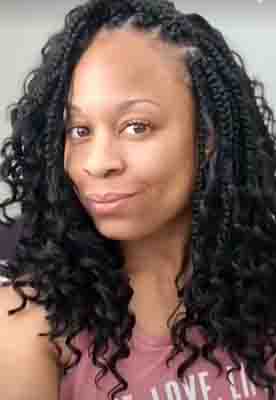
Crochet hair offers many benefits as a protective style, helping to safeguard natural hair from damage and breakage. With its versatility and low-maintenance nature, crochet hair is a popular choice for those looking to maintain healthy and vibrant hair.
Protection It Offers To Natural Hair
- Crochet hair is a popular protective style that can safeguard your natural hair from damage caused by environmental factors, manipulation, and excessive heat styling.
- The crochet hair technique involves attaching extensions to cornrowed or braided hair, creating a protective barrier. This method ensures minimal tension on your natural hair, reducing the risk of breakage and hair loss.
- The extensions used for crochet hair are typically made from synthetic hair, human hair, or a blend of both. These fibers provide an extra layer of protection as they shield your strands from external elements, such as harsh weather conditions and harmful UV rays.
- With crochet hair, your own hair remains tucked away, shielded from potential damage caused by daily styling, combing, and brushing.
Versatility And Variety Of Crochet Hairstyles
- One of the remarkable aspects of crochet hair is its versatility, offering a wide range of hairstyles to suit any occasion or personal style preference.
- From voluminous afros to elegant updos, crochet hair allows you to experiment with various hairstyles without compromising the health of your natural hair. The options are virtually limitless.
- Crochet hair can mimic the appearance of natural hair textures, such as curly, coily, or kinky, providing a seamless integration with your own hair.
- Additionally, crochet hair allows you to explore different hair lengths and colors effortlessly. You can easily switch up your look by simply changing the crochet hair extensions.
Low Maintenance Compared To Other Protective Styles
- Crochet hair is favored by many as it requires minimal effort and maintenance compared to other protective styles.
- Once the crochet hair is installed, you can proudly flaunt your new hairstyle without the need for constant styling or manipulation.
- Regular moisturizing and occasional cleansing are essential to maintain the health of your natural hair underneath the crochet hair. However, these routines are typically less time-consuming than caring for other protective styles, such as braids or twists.
- The low maintenance aspect of crochet hair makes it a practical choice for those with busy schedules or limited time for hair care. You can enjoy a stunning and protected style without the added stress of complex upkeep.
So, if you’re looking for a stylish yet protective hairstyle for your natural hair, crochet hair is definitely worth considering. With the protection it offers, the versatility of different styles, and the low maintenance required, you can achieve both healthy and fabulous hair effortlessly.
Cons Of Crochet Hair As A Protective Style
Crochet hair, while often used as a protective style, does have its downsides. It can cause scalp irritation, tension, and potential hair damage if not installed or maintained properly.
Potential Damage To Natural Hair If Not Installed Or Maintained Properly
- Misapplication or improper installation of crochet hair can cause tension on the natural hair, leading to breakage and damage.
- Pulling the hair too tightly or using improper techniques may weaken the hair follicles and result in hair loss.
- Neglecting to maintain the crochet hair properly can lead to matting, tangling, and knotting, causing difficulty in removing the style without causing damage to the natural hair.
- Failure to properly moisturize and care for the natural hair underneath the crochet can result in dryness and breakage.
Difficulty In Washing And Caring For Crochet Hair
- Washing crochet hair can be challenging due to its synthetic or human hair composition. It requires delicate handling and specific products designed for synthetic or human hair.
- Drying crochet hair can be time-consuming, as the hair tends to hold moisture, especially at the braided base, which can lead to an unpleasant smell or mildew if not properly dried.
- Unlike other protective styles, crochet hair cannot be washed frequently. This may result in a buildup of dirt, sweat, and product residue, causing scalp issues and hindering hair growth.
- Detangling the hair after washing can be tedious and time-consuming due to the amount of hair involved. It requires patience and gentle handling to prevent hair breakage.
Limited Durability Compared To Other Protective Styles
- Crochet hair has a shorter lifespan compared to other protective styles. It may last anywhere from a few weeks to a few months depending on the type of hair used and how well it is maintained.
- The constant friction between the crochet braids and clothes, pillowcases, or hair accessories can lead to frizz and loss of style definition over time.
- The braided base of crochet hair can loosen or unravel with daily activities, compromising the integrity of the style and potentially causing damage to the natural hair.
- Unlike other protective styles like braids or wigs, crochet hair cannot be easily refreshed or restyled. It often requires complete removal and reinstallation, adding extra time and effort to maintain the desired look.
While crochet hair can be a convenient and stylish protective style, it also has its drawbacks. Improper installation and maintenance can cause damage to natural hair, washing and caring for crochet hair can be challenging, and it has limited durability compared to other protective styles.
It is important to weigh the pros and cons before choosing crochet hair as a protective style to ensure it suits your hair needs and lifestyle.
How To Install Crochet Hair As A Protective Style
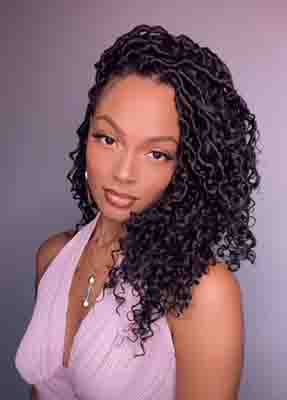
Crochet hair can be a great protective style for your natural hair. Learn how to install it with these easy steps.
Step-By-Step Guide To Installing Crochet Hair:
- Start by preparing your natural hair by washing and conditioning it thoroughly. This will ensure that your hair is clean and moisturized before installation.
- Detangle your hair using a wide-tooth comb or brush to remove any knots or tangles. This step is essential to prevent any breakage or damage when installing the crochet hair.
- Depending on the desired style, you may need to braid your hair into cornrows or create small sections to attach the crochet hair. Make sure to secure the braids with rubber bands or hair clips to keep them in place.
- Take a crochet needle or crochet hook and insert it underneath one of the braids or sections. Attach the crochet hair to the hook, then pull it through the braid or section until a loop is formed.
- With the loop still intact, take the ends of the crochet hair and insert them through the loop. Pull the ends tightly to secure the hair onto your natural hair.
- Continue this process, moving from one braid or section to the next until all of the desired areas are covered with crochet hair.
- Once all the crochet hair is installed, use your fingers or a comb to fluff and style the hair to your liking. You can also trim the hair to achieve the desired length or shape.
- To maintain the crochet hair, make sure to moisturize your scalp regularly and protect your hair at night by wearing a satin bonnet or using a satin pillowcase.
Recommended Materials And Tools For Installation:
- Crochet hair: Choose a texture and length that suits your style preference.
- Crochet needle or crochet hook: These tools are essential for attaching the crochet hair to your natural hair.
- Rubber bands or hair clips: Use these to secure your braids or sections before attaching the crochet hair.
- Wide-tooth comb or brush: Detangle your natural hair before installation to prevent breakage.
- Hair products: Use shampoo and conditioner to wash and condition your hair before installation. You can also use moisturizers or oils to keep your scalp and natural hair hydrated.
Tips And Tricks For A Successful Installation:
- Prep your natural hair: Ensure that your hair is clean, moisturized, and well-detangled before installing the crochet hair.
- Choose the right hair texture: Select crochet hair that matches your natural hair texture for a seamless and natural look.
- Secure the braids or sections: Use rubber bands or hair clips to hold your braids or sections in place, ensuring a sturdy foundation for the crochet hair.
- Take your time: Installing crochet hair can be time-consuming, so be patient and work methodically to achieve the desired result.
- Experiment with different styles: Crochet hair offers versatility, so don’t be afraid to try out different styles and looks.
- Maintenance is key: Keep your scalp moisturized, protect your hair at night, and regularly style and fluff the crochet hair to maintain its appearance.
Installing crochet hair as a protective style can be an excellent option for those looking to give their natural hair a break while still maintaining a stylish and versatile look. By following these steps, using the recommended materials and tools, and implementing the provided tips and tricks, you’ll be able to install crochet hair successfully and keep your natural hair protected and healthy.
How To Maintain Crochet Hair As A Protective Style
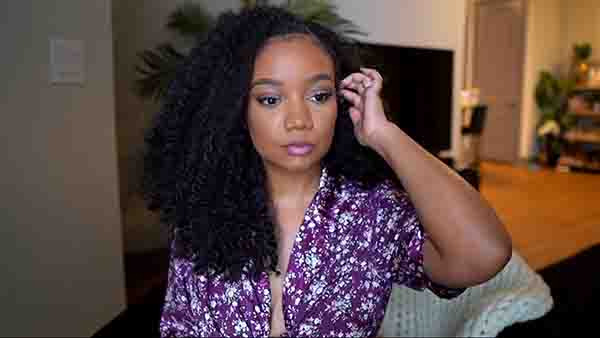
Crochet hair can be a protective style if properly maintained. Follow these tips to ensure its longevity and keep your natural hair healthy and protected.
Is Crochet Hair A Protective Style
Crochet hair is a popular protective style that has gained significant traction in recent years. This technique involves attaching pre-looped hair extensions to cornrows using a crochet needle. Not only does it allow for endless styling possibilities, but it also promotes hair growth by providing a protective barrier.
However, like any hairstyle, crochet hair requires proper maintenance to ensure its longevity and keep your natural hair healthy. In this section, we will discuss the dos and don’ts for maintaining crochet hair, recommended products for washing and conditioning, as well as techniques for preserving its longevity.
Dos And Don’Ts For Maintaining Crochet Hair
Maintaining crochet hair is crucial to preserve its appearance and prevent damage to your natural hair. To help you achieve the best results, here are some dos and don’ts to keep in mind:
Dos:
- Keep your scalp clean: Regularly cleanse your scalp using a diluted shampoo to prevent build-up and maintain a healthy environment for your hair follicles.
- Moisturize: Hydration is key! Moisturize your natural hair and crochet hair regularly to prevent dryness and breakage.
- Protect at night: Wear a silk or satin scarf or use a bonnet while sleeping to prevent friction and maintain the style.
- Treat gently: Be gentle when combing or brushing your crochet hair to avoid unnecessary tension and hair loss.
- Trim regularly: Trim any damaged or split ends to keep your crochet hair looking fresh and neat.
Don’ts:
- Use excessive heat: Avoid using excessive heat styling tools on your crochet hair, as it can cause damage and weaken the hair.
- Overstyle: While it’s tempting to experiment with different hairstyles, avoid excessive manipulation to prevent unnecessary stress on your natural hair.
- Neglect your natural hair: Remember to care for your natural hair underneath. Moisturize it regularly and keep it clean to promote healthy growth.
Recommended Products For Washing And Conditioning Crochet Hair
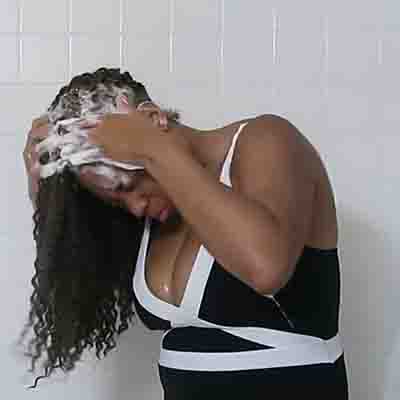
Choosing the right products for washing and conditioning your crochet hair is essential to maintain its appearance and health. Here are some recommended products you can consider:
- Shampoo: Look for sulfate-free shampoos that are gentle on the hair and won’t strip away natural oils.
- Conditioner: Use a moisturizing conditioner to keep your crochet hair soft, manageable, and tangle-free.
- Leave-in conditioner: A leave-in conditioner helps to retain moisture and protect your hair from external factors throughout the day.
- Oils: Consider using natural oils, such as coconut oil or argan oil, to keep your hair moisturized and add shine.
- Scalp treatment: If you experience dryness or itchiness, opt for a soothing scalp treatment designed for protective hairstyles.
Remember to follow the product instructions and use them in moderation to prevent product buildup or an oily appearance.
Techniques For Preserving The Longevity Of Crochet Hair
To make the most out of your crochet hair and extend its lifespan, here are some useful techniques to consider:
- Protective styling: Opt for low manipulation hairstyles that keep your crochet hair tucked away, such as buns, twists, or updos. This will help minimize friction and preserve the style.
- Avoid excessive washing: Overwashing can lead to the hair becoming frizzy or lose its shape. Aim to wash your crochet hair once every 1-2 weeks, or as needed.
- Use a satin or silk pillowcase: Sleeping on a satin or silk pillowcase reduces friction and helps maintain the integrity of your crochet hair.
- Limit exposure to water: Excessive exposure to water can cause your hair to lose its shape and lead to tangling. Protect your crochet hair when swimming or showering by wearing a waterproof cap or using protective styles, such as braids or buns.
- Avoid excessive heat styling: Heat can potentially damage and weaken your crochet hair. Minimize the use of heat styling tools or opt for heatless styling methods when possible.
By following these techniques, you can not only maintain the longevity of your crochet hair but also ensure the health and vitality of your natural hair. Remember, proper maintenance is key when it comes to any protective style.
Alternatives To Crochet Hair As A Protective Style
Crochet hair is a popular protective style, but if you’re looking for alternatives, consider braids, wigs, weaves, twists, or knotless box braids. These styles offer versatility and help protect your natural hair from damage.
Protective styles are essential for maintaining the health and length of natural hair. While crochet hair is a popular choice for many, there are alternative options that can provide similar benefits. In this section, we will explore other popular protective styles, compare their pros and cons, and discuss important factors to consider when choosing the right style for your hair.
Overview Of Other Popular Protective Styles:
- Braids: Braids are a classic protective style that can be worn in various ways, such as box braids, cornrows, or twists. They provide low manipulation and help to shield your natural hair from the elements.
- Wigs: Wigs are a versatile option that allows you to switch up your look while protecting your natural hair. They offer minimal tension and can be easily removed for maintenance or styling.
- Weaves: Weaves involve attaching hair extensions to your natural hair. They can be an excellent protective style, providing the opportunity for length retention and versatility in styling.
- Buns/Updos: Buns and updos are simple yet elegant protective styles that keep your ends tucked away and minimize daily manipulation. They are also perfect for keeping your hair off your face during hot weather.
- Twists: Twists are similar to braids but require a different technique. They can be done with your natural hair or hair extensions, providing a versatile and low-maintenance option for protective styling.
Factors To Consider When Choosing A Protective Style:
- Hair Length: Some styles may require a certain length for installation or may be more suitable for shorter or longer hair.
- Hair Texture: Consider how your hair texture will blend with the style and if adjustments will be necessary to achieve the desired look.
- Maintenance: Determine how much time and effort you are willing to dedicate to maintaining the style and ensure it aligns with your lifestyle.
- Protective Ability: Assess the level of protection the style offers in terms of minimizing manipulation, keeping ends tucked away, and shielding your natural hair from harsh environmental factors.
- Comfort: Consider how comfortable you will be wearing the style for an extended period and if it may cause any discomfort or pain.
By exploring the different alternatives to crochet hair as a protective style, you can choose the one that best suits your hair type, lifestyle, and preferences. Remember to prioritize the health and well-being of your natural hair when making your decision.
FAQ
Disadvantages of crochet hair can include potential damage if not installed or maintained properly, itchiness, and the need for periodic reinstallation.
Crochet hair can damage natural hair if the installation process is too tight or if it’s left in for an extended period without proper care.
Crochet braids can cause hair breakage if the braids are installed too tightly or if there’s excessive tension during styling.
Wearing crochet braids for too long without proper care can lead to hair breakage, matting, and potential damage to your natural hair.
Crochet braids are often considered easier and quicker to install than traditional box braids because the hair is pre-looped and attached to your own hair.
To make crochet hair look natural, choose a texture and style that matches your natural hair, and ensure the installation is well-blended.
Benefits of crochet hair include versatility, ease of installation, protective styling, and the ability to change your hairstyle quickly.
The longevity of crochet hair can vary depending on factors like hair type and care, but they can typically last 4 to 6 weeks or longer.
Pros of crochet include creativity, stress relief, and community. Cons may include hand strain and potential frustration.
How often you crochet your hair depends on your hair’s health and your styling preferences, but allowing breaks between installations is generally advisable.
The choice between crochet braids and box braids depends on personal preference and styling goals. Crochet braids are quicker to install, while box braids may last longer.
Yes, you can wash crochet hair. Use a diluted shampoo, focus on the scalp, and avoid excessive manipulation to maintain the style.
The benefits of crocheting can include stress relief, improved focus, a sense of accomplishment, and the opportunity to create unique items.
The choice between crochet and sew-in styles depends on individual preferences and hair type. Crochet can be quicker to install, while sew-ins offer more styling options.
To maintain crochet hair, avoid excessive manipulation, moisturize as needed, and use a satin or silk scarf or bonnet at night.
Crocheting can have mental health benefits, as it can reduce stress, improve focus, and provide a sense of accomplishment.
No, crochet is a technique used to install extensions or create hairstyles using real or synthetic hair.
Crochet braids are generally faster to install than traditional braiding methods because the hair is pre-looped and attached.
To prevent crochet hair from getting loose, ensure that the loops are securely fastened during installation and avoid excessive manipulation.
Crochet projects can be durable if made with quality materials and proper technique. The durability varies depending on the item.
The cost of getting your hair crocheted varies based on factors like location, stylist expertise, and the type of hair used. Prices can range from $50 to $200 or more.
Crochet braids can protect natural hair and promote growth by reducing manipulation and preventing exposure to harsh styling methods.
Yes, crochet braids can get wet. However, it’s important to dry them thoroughly to prevent odor and potential damage.
Hair shedding after a protective style can occur due to natural hair shedding that was retained during the style. It’s typically not a cause for concern.
Crochet braids can be safe for your hair if installed and maintained correctly. Avoid excessive tension and take breaks between styles for the best results.
Yes, you can shower with crochet hair, but it’s essential to dry the hair thoroughly afterward to prevent odor and potential damage.
Crochet faux locs can damage hair if they are installed too tightly or if there’s excessive tension on the hair and scalp.
To sleep with crochet curly hair, protect it by using a satin or silk bonnet or pillowcase to minimize friction and frizz.
Yarn braids can be a creative and protective style, but they may be heavier than traditional braiding hair and require extra care.
To remove crochet hair, gently unravel the knots or loops and avoid cutting the hair to preserve its reusability.
Crochet braids can be relatively easy to maintain with proper care, including regular moisturizing and protecting the style at night.
Related Articles:
Conclusion
Crochet hair can indeed be considered a protective style. It offers a wide range of benefits, such as reduced manipulation and decreased tension on the scalp, which can promote healthier hair growth. The versatility of crochet hair allows individuals to experiment with different styles, textures, and colors without causing damage to their natural hair.
Additionally, the low-maintenance nature of crochet hair makes it an ideal choice for those seeking a convenient styling option. However, it is important to remember that each person’s hair is unique, and what works for one may not work for another.
It is essential to properly care for your crochet hair to ensure its longevity and to prevent any potential damage to your natural hair. So, if you’re looking for a protective style that offers versatility and minimal maintenance, crochet hair may be the perfect choice for you.

